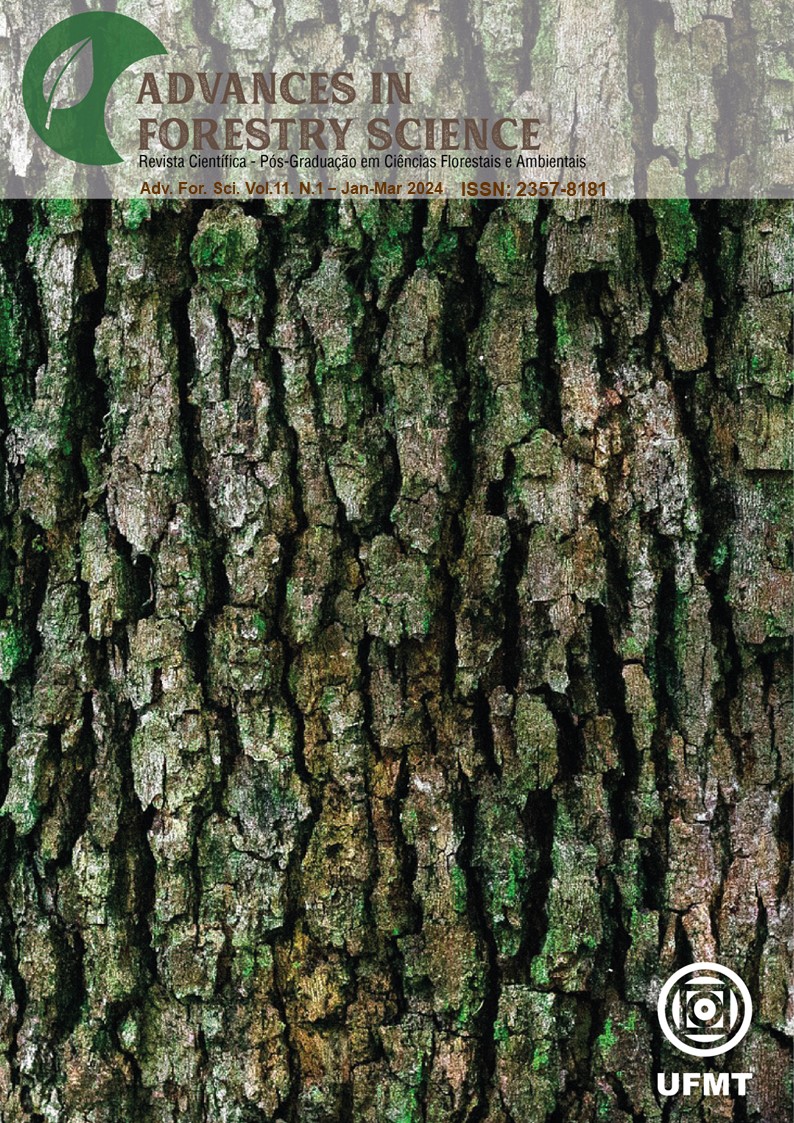Quality of wood waste stored in sawmills in the Amazon for energy purposes
DOI:
https://doi.org/10.34062/afs.v11i1.16403Abstract
Storage of wood waste exposed to atmosphere may alter the quality of the Fine Wastes of Sawed Wood (RFDM). Thus, the objective was to evaluate the physical, chemical and energetic characteristics of Amazonian RFDM from the different sections of the different sections of the preexisting piles stored at sawmills in the Rorainópolis Timber Hub, state of Roraima, Brazil. The tests were granulometry, moisture (wet basis), hydrogen potential, solubility of the wood in 1% sodium hydroxide solution, bulk density, extractives of wood, lignin, holocellulose, volatile materials, ash, fixed carbon and higher heating value (PCS). The sections of the piles presented statistically different behaviors for most of the physical, chemical and energetic characteristics. The sections of the base and middle of the piles obtained similar and distinct behaviors from the top of the piles, exceptions were the tests of hydrogen potential, solubility of the wood in 1% sodium hydroxide solution, extractives of wood and ash. Based on the results obtained, the RFDM underwent chemical and energetic changes during the storage process. In addition, storage contributed to the increase of PCS at the base and in the middle of the piles, due to the higher percentage of lignin present in the samples. Based on the results obtained, the RFDM of the different sections of the piles have initial potential for energy production.
Downloads
Downloads
Published
Issue
Section
License
All copyright must be assigned to the Federal University of Mato Grosso.

